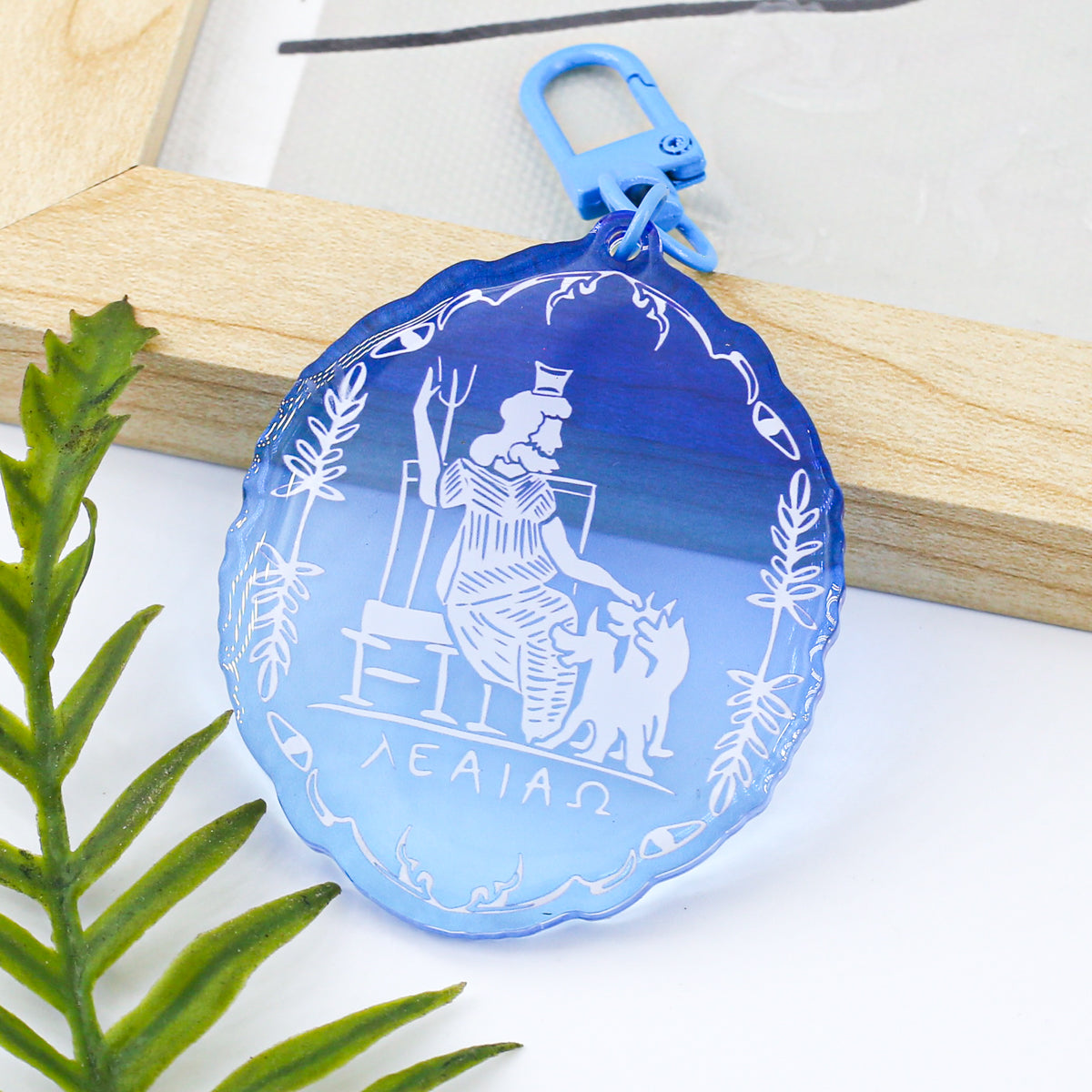
Serapis and Cerberus Resin Stained Glass Hanging
Reliable shipping
Flexible returns
I've experimented with other forms of this hanging since I already had a pre-designed template. The stone version uses lapis lazuli, while the resin hanging uses blue, which I feel matches really well!
Let me share a bit about Serapis and Cerberus.
In the long river of ancient art and history, the unique pairing of Serapis and Cerberus weaves a splendid chapter about cultural fusion, changing beliefs, and artistic expression.
The birth of Serapis as a Greco-Egyptian deity is in itself an extraordinary cultural convergence. He wears a modius on his head, symbolizing fertility and dominion over the underworld. Possessing both the classical beauty of Greek sculpture and the mysterious power of Egyptian deities, he is a microcosm of cultural exchange during the Hellenistic period.
And Cerberus, the three-headed hound of the underworld, represents absolute loyalty and steadfast guardianship of the established order. It frequently appears in ancient Greco-Roman art, reminding people of their reverence for life and death. Although their connection isn't direct in traditional mythology, both are closely associated with the underworld: Serapis is one of its rulers, and Cerberus is its loyal guardian. This commonality allows them to collectively symbolize order and authority, boundaries and protection, as well as power and mystery. Whether viewed from the visual impact of the artwork or the historical and cultural significance it carries, Serapis and Cerberus offer us a unique perspective to appreciate how ancient people constructed their understanding of the world, life, and death through myth and art.
Note: All "ancient records" content is based on reasonable deductions from archaeological artifacts and historical documents. Modern science confirms that such amulets do not possess actual medical efficacy; their value is primarily in the fields of art history, semiotics, and ancient cross-cultural exchange research.



